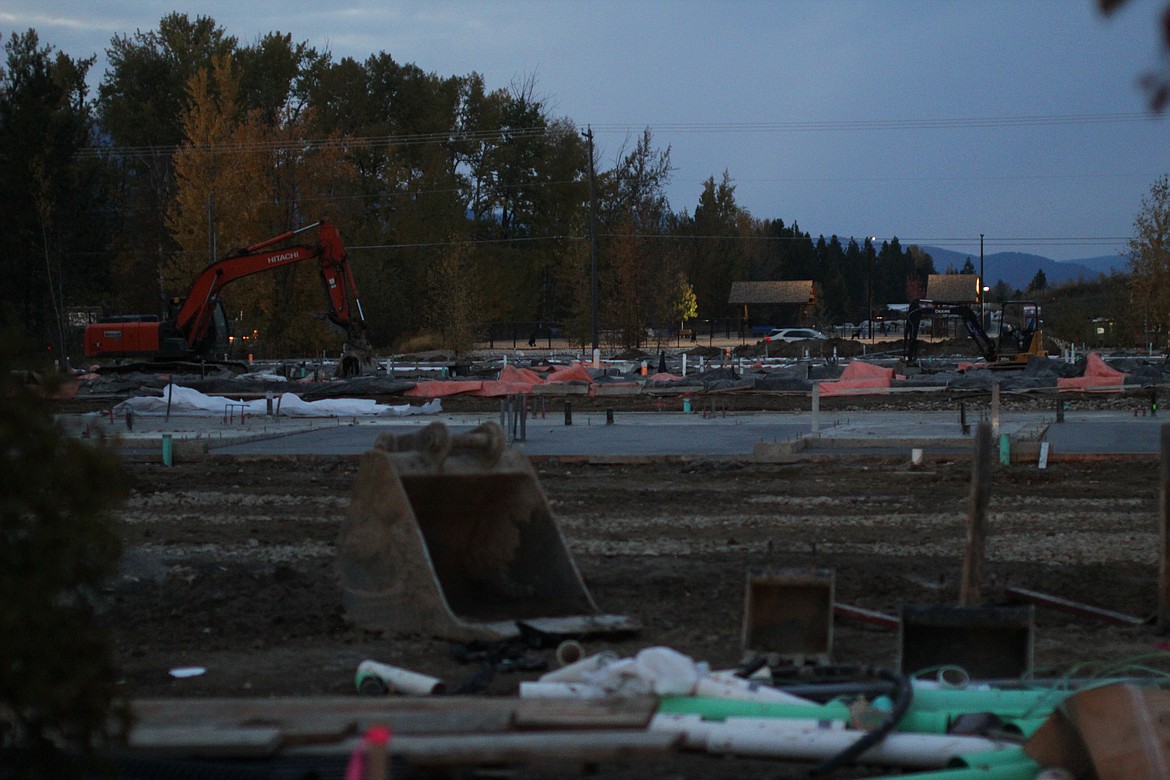‘We’re running out of housing under $400,000’
Editor's note: This story has been updated to reflect the correct spelling of Stephanie Rief's name.
SANDPOINT — Residents may have noticed a tightening housing market recently — especially if they’re trying to find a home or apartment for cheap.
It’s not imagined, said Stephanie Rief, association executive at the Selkirk Association of Realtors. In the past few months, residential home sales have increased by 58% in dollar amount, she said.
According to SAR data, the group has seen the number of listings sold per month roughly triple since January Not only that but the absorption rate — how quickly properties are sold — increased by about 42%.
Much of that increase, some real estate officials speculate, is due to a few factors: One is the relatively rural location of Sandpoint and the nature surrounding it allows for an outdoor lifestyle, Rief said, and easy options for working from home.
Another reason may be politically motivated in some cases. Many of the people moving to Sandpoint are conservative-leaning, said Raphael Barta, a Realtor and Sandpoint local. People research before moving, and want to live in a place they’ll feel comfortable. Often, part of that is having shared political views.
“We don’t have big cities, we don’t have a lot of crime, we don’t have a lot of civic unrest,” he said.
Whatever is driving the demand, it’s caused home prices to skyrocket, Rief said. Listings that might have gone for about $350,000 in May are now closer to $650,000 to over 700,000, she said.
“We’ve seen people bid tens of thousands to escalate closing dates,” she said.
High lumber costs have also somewhat increased new home prices, Rief said.
For many years, lumber sales remained relatively stagnant until around, 2014 despite increasing costs of business, said Andy Dunham, director of sales at Idaho Forest Group. During that time more people left the industry.
Recently, because of low interest rates, many people have decided to build homes. Lumber demand, which also increased because of more home improvement projects during COVID-19, has skyrocketed, he said.
In Bonner County specifically, many new homeowners are people who sold smaller properties in big cities, then moved to the area and building houses twice the size of their previous home, he said.
In addition, when COVID-19 began impacting the region, some lumber companies made the assumption that the housing market would be less active, said Steve Barham, projects and safety services coordinator for Associated Logging Contractors. Loggers slowed down production accordingly, but instead saw an increase in demand.
“When COVID-19 first hit everyone thought the housing market was going to drop so we slowed things down,” he said. “But instead, it went up.”
While homes in Bonner County may seem affordable for many of the residents moving here, it has had an undeniable impact on some locals who were used to lower housing prices, Rief said.
For many residents, especially low-income residents, finding affordable housing has become nearly impossible — and those who have it rarely leave.
“I think that some of the locals have been priced out,” Rief said. “The rent is astronomical here.”
In some cases, she said, young adults who are low-income are moving away from Sandpoint to Coeur d’Alene or other locations where they can more easily rent shared living spaces with groups to offset the costs.
“You have to have a pretty good job here, or not a lot of debt to be able to afford housing,” she said.
In some cases, Rief said, wages for residents also have not kept up with housing prices.
In the case of low-income residents who can’t easily move, or who lose access to previously affordable housing, there’s an added strain.
One woman Rief knows personally, she said, recently had her rent increase dramatically.
“She had a place that she was renting [and] the owners wanted to sell it,” she said. “Her rent almost doubled. She’s a single mother.”
So far, little is being done to provide more affordable housing, Barta said. Affordable housing isn’t always the best deal for contractors, and many small businesses don’t have the financial stability to make that kind of investment.
“A regular contractor can’t afford to build affordable,” he said.
Some work is being done to build more housing, and more affordable housing, Rief said, including the efforts for development at University Park, or the construction at the intersection of Kootenai Cutoff Road and Larkspur Street.
Even then, though, what is affordable to one person may not be to another, she said.
“Some people think $300,000 is affordable, some say $100,000,” she said.
For Barta, it seems a matter of when, and not if, there is a recession, he said.
“We already ran out of affordable housing,” he said. “Now we’re running out of housing under $400,000.”
Although there will likely be a recession that slows the housing market, Dunham said, it seems unlikely to have the catastrophic effect of the 2008 housing crisis.
“At the end of the day, you could not afford the home that you were buying [in 2008]. We’re not in that situation,” he said. “Consumer spending will go down, interest rates will go up.”

